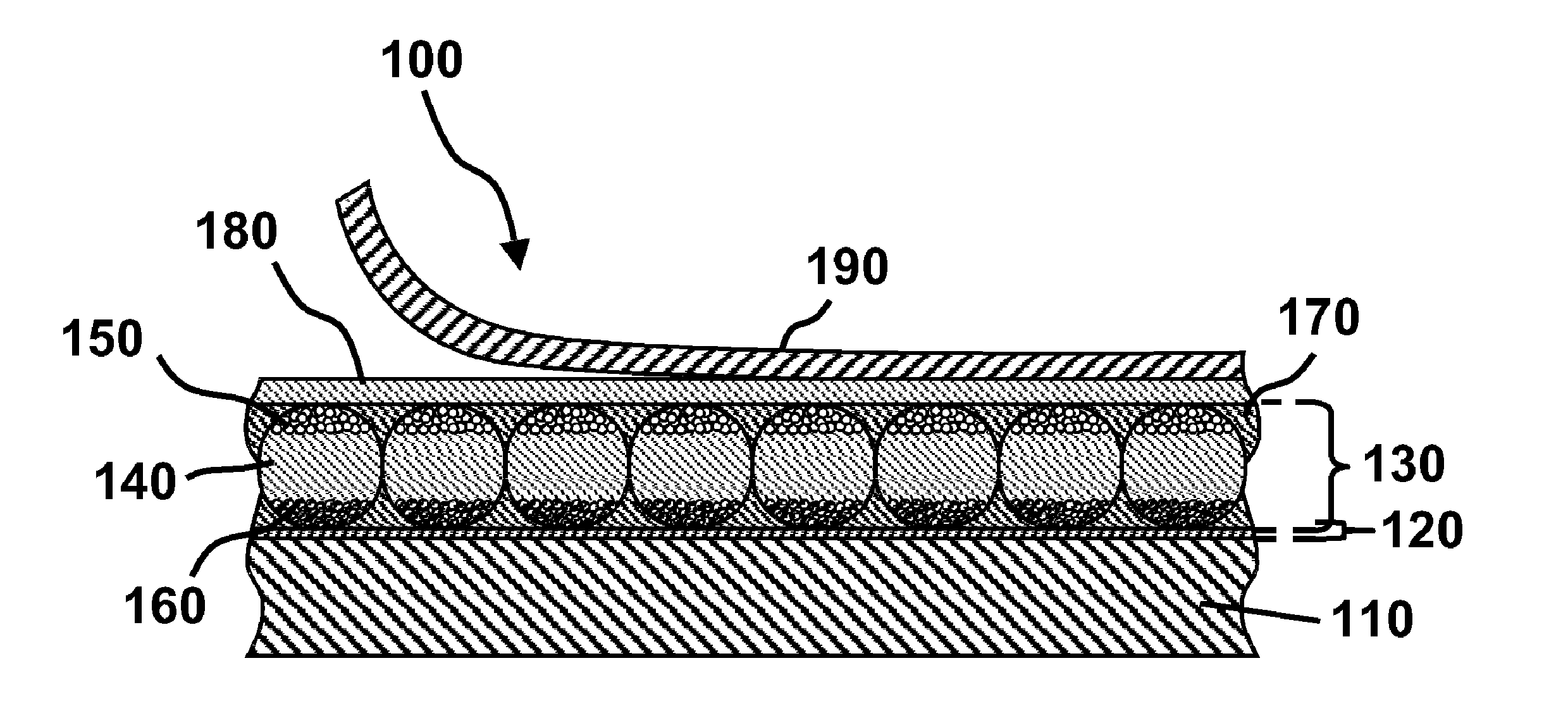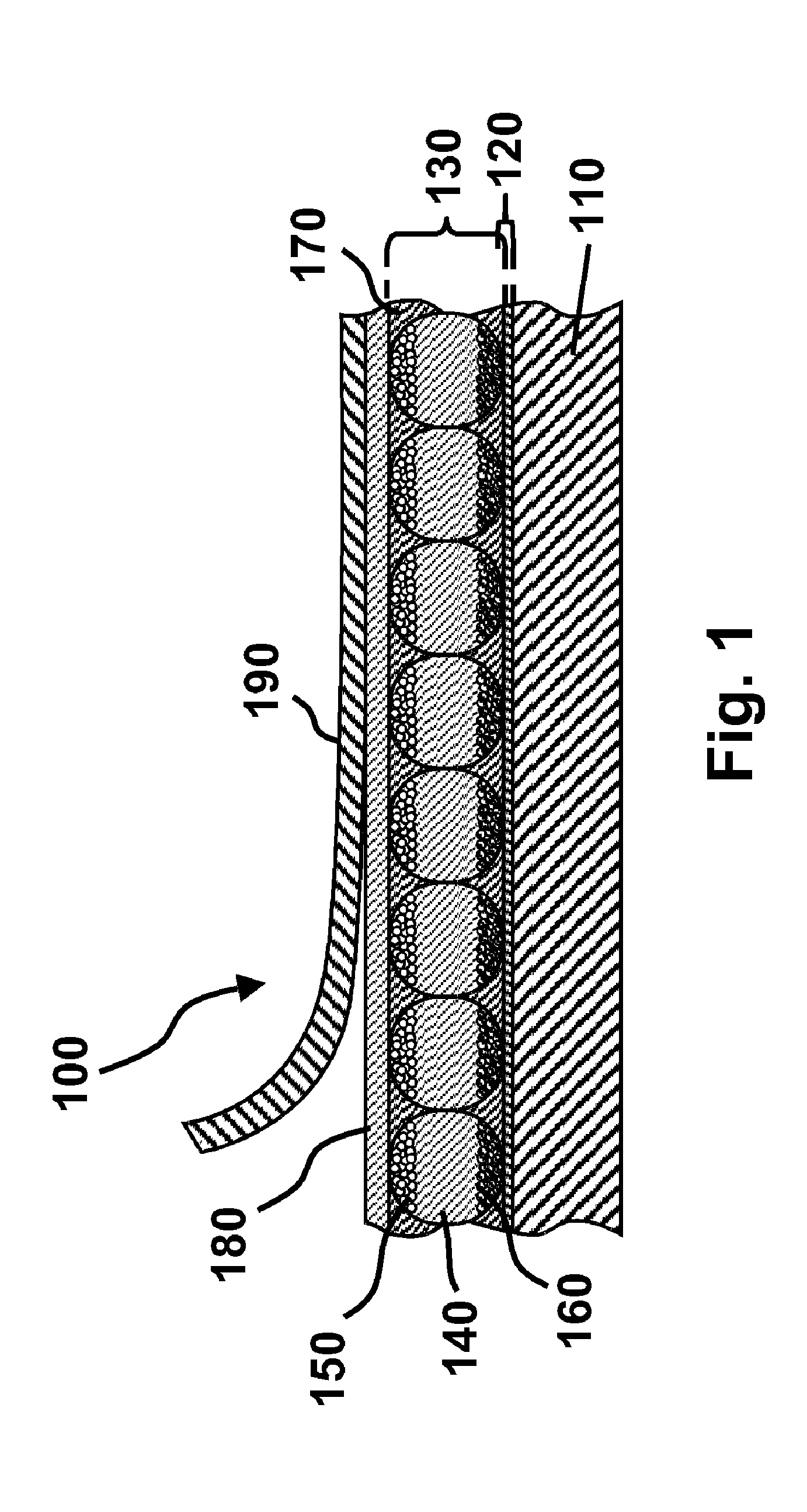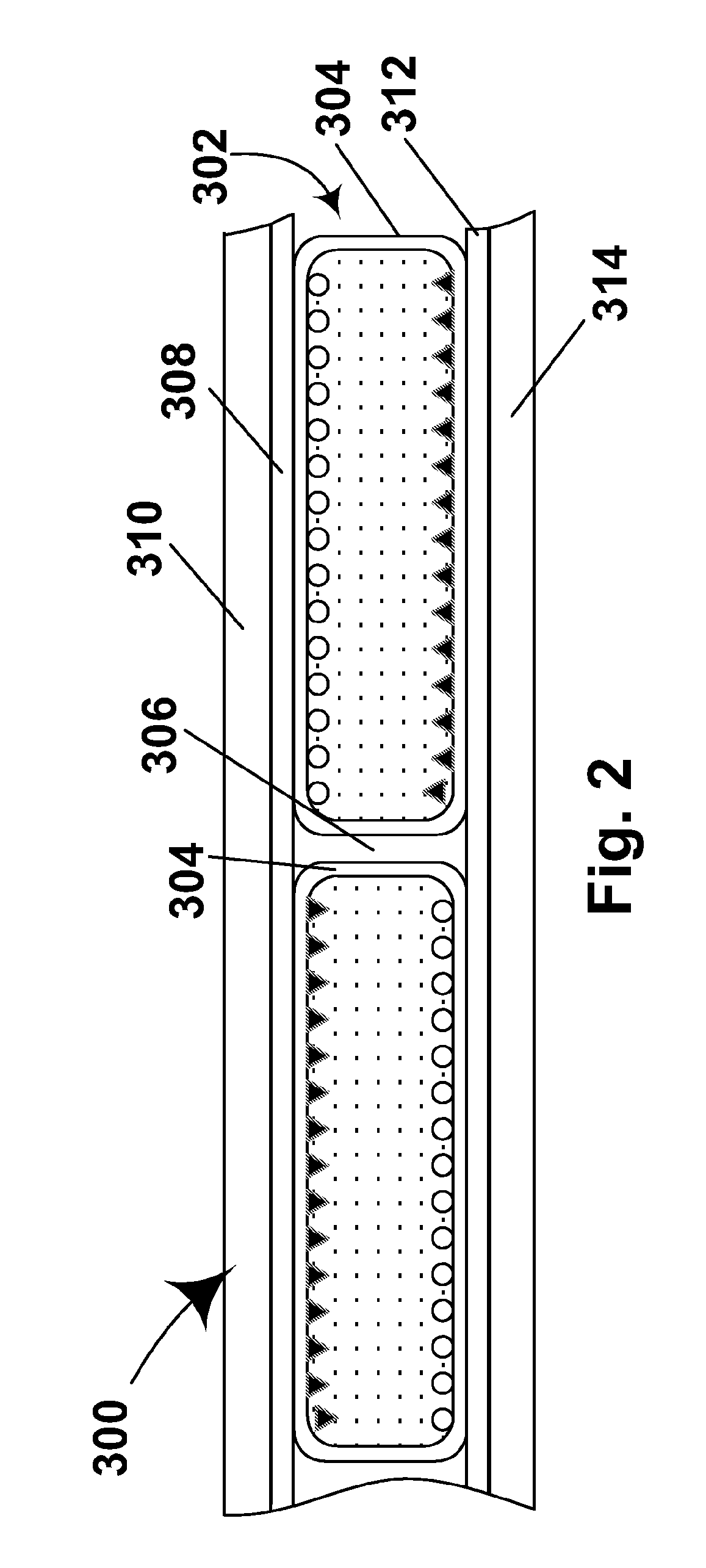Electro-optic display and materials for use therein
a technology applied in the field of optical display and materials, can solve the problems of inadequate service life of optical display, preventing widespread use, and gas-based electrophoretic media being susceptible to the same types of problems
- Summary
- Abstract
- Description
- Claims
- Application Information
AI Technical Summary
Benefits of technology
Problems solved by technology
Method used
Image
Examples
example 1
Custom Polyurethane with Short Polyester Segments
[0076]A polyurethane prepolymer was synthesized under a nitrogen atmosphere in a jacketed 500 mL glass reactor equipped with a mechanical stirrer, a thermometer, and a nitrogen inlet. 4,4′-Methylenebis(cyclohexyl isocyanate) (20.99 g, Bayer Desmodur W), polycaprolactone diol (31.25 g, Aldrich, average Mn ca. 1250), and dibutyltin dilaurate (0.04 g, Aldrich) were charged into the reactor and the mixture was heated at 80° C. for 2 hours. Thereafter, a solution of 2,2-bis(hydroxymethyl)propionic acid (3.35 g, Aldrich) in 1-methyl-2-pyrrolidinone (10 g, Aldrich) was added into the reactor and the reaction allowed to proceed at 80° C. for another hour to give an isocyanate-terminated prepolymer. The reactor temperature was then lowered to 60° C. for 30 minutes, and triethylamine (2.4 g, Aldrich) was added to neutralize the carboxylic acid. The reactor temperature was then further lowered to 30° C. and de-ionized water (105 g) was added to ...
example 2
Custom Polyurethane with Polyester Containing Steric Hindrance Group
[0077]A polyurethane prepolymer was synthesized under a nitrogen atmosphere in a jacketed glass reactor equipped with a mechanical stirrer, a thermometer, and a nitrogen inlet. 4.4′-Methylenebis(cyclohexyl isocyanate (18.3 g) is added to the reactor, followed by 1-methyl-2-pyrrolidone (27 g), polycaprolactone (2000 molecular weight, 49.3 g), and 2,2-bis(hydroxymethyl)propionic acid (3.4 g). The reactor was heated to 95° C. for 4 hours and then cooled to 70° C. to form an isocyanate-terminated prepolymer. Triethylamine (2.0 g) was added slowly to the prepolymer and the resultant mixture mixed for 30 minutes. Water (84 g) was added to a second reactor equipped with a mechanical stirrer and a thermocouple. Prepolymer (80 g) was then slowly transferred from the first reactor to the second reactor with stirring. Hexamethylenediamine (2.7 g of a 70% solution) was added to the second reactor for chain extension, and the re...
example 3
Thermal Properties of Polyurethane
[0078]The polyurethanes prepared in Examples 1 and 2 above were subjected to differential scanning calorimetry. To provide a control, the aforementioned 75:25 R 9314 / R 9621 blend (designated simply “Blend” in FIG. 3) was also tested in the same manner. The results are shown in FIG. 3.
[0079]From FIG. 3, it will be seen that the blend shows a marked exothermic peak at about 40° C., corresponding to the melting of the polyester segments in R 9314; this peak does not disappear upon re-heating. No comparable peak is present in the curve for the polyurethanes of the present invention, thus indicating that the use of short polyester segments, with or without a steric hindrance group, was indeed effective in eliminating the type of thermal transition seen with R 9314, and ensuring long term thermal stability of polyurethane binders of the present invention.
PUM
| Property | Measurement | Unit |
|---|---|---|
| diameter | aaaaa | aaaaa |
| thickness | aaaaa | aaaaa |
| thickness | aaaaa | aaaaa |
Abstract
Description
Claims
Application Information
 Login to View More
Login to View More - R&D
- Intellectual Property
- Life Sciences
- Materials
- Tech Scout
- Unparalleled Data Quality
- Higher Quality Content
- 60% Fewer Hallucinations
Browse by: Latest US Patents, China's latest patents, Technical Efficacy Thesaurus, Application Domain, Technology Topic, Popular Technical Reports.
© 2025 PatSnap. All rights reserved.Legal|Privacy policy|Modern Slavery Act Transparency Statement|Sitemap|About US| Contact US: help@patsnap.com



